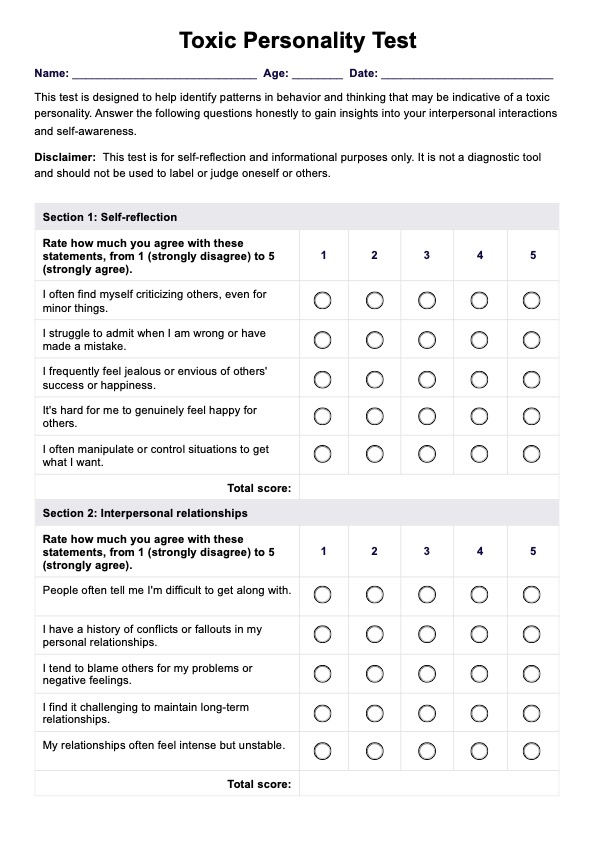You can identify a toxic person by their consistent negative behaviors, such as manipulation, excessive criticism, lack of empathy, self-centeredness, and creating drama or conflict in relationships.

Toxic Personality Test
Use this Toxic Personality Test to help your client determine if they have a toxic personality or at least traits of one.
Use Template
Toxic Personality Test Template
Commonly asked questions
To shut down a toxic person, maintain firm boundaries, communicate clearly and assertively, avoid getting emotionally entangled, and, if necessary, limit or end your interaction with them. This is sound advice that professionals can offer to clients who have to deal with toxic people all the time.
Some toxic individuals may be unaware of their harmful behavior, while others might recognize it but lack the willingness or ability to change.
EHR and practice management software
Get started for free
*No credit card required
Free
$0/usd
Unlimited clients
Telehealth
1GB of storage
Client portal text
Automated billing and online payments











